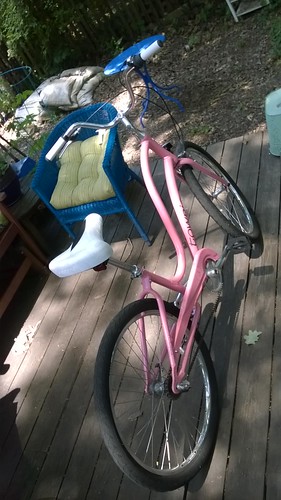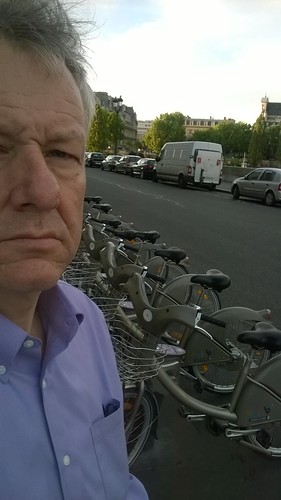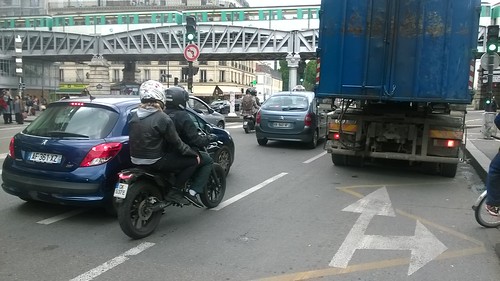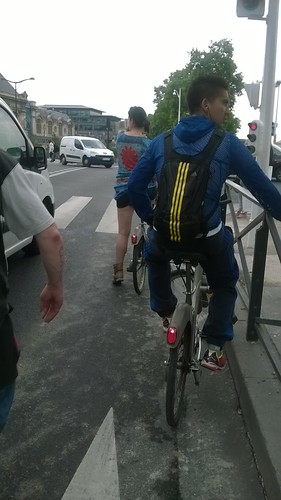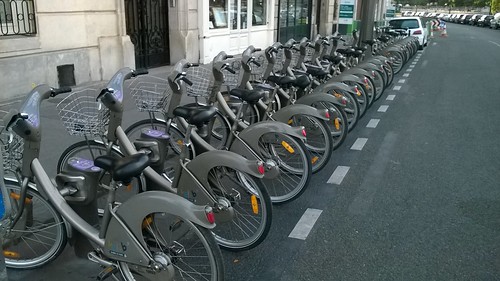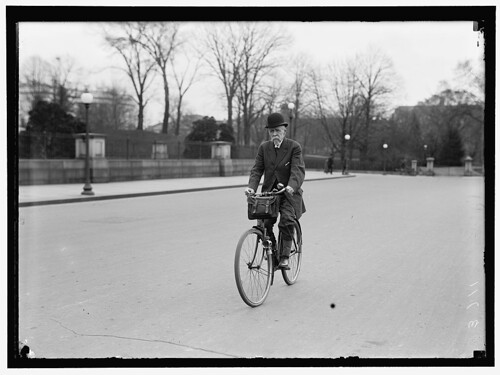Raleigh Sports from 1973 - seen from above
In the 1960s when I lived overseas, my parents bought me a bike much like this one, with the three speed hub shift and full painted fenders. This is a somewhat later model but much the same thing - a 1973 "Sports" model. Despite the name, the bike was a utilitarian transportation vehicle-bicycle and not particularly sporty. However I remember it was great fun to run when I was in fourth and fifth grade. (Unfortunately later my parents decided we should get rid of it, which probably made sense since it would have been too small - but still, a little sad now.)
The Sports model is described by Sheldon Brown - including this paragraph:
Most modern bicycles are designed with the primary intent to catch your eye on the sales floor, and persuade you to buy. That is not what a Raleigh Sports was about...these were designed to provide solid, dependable transportation for the British public, at a time when only the upper classes had motorcars. These bikes were built to last 100 years, with reasonable care.
The condition, given that the bike is more than 40 years old, seems very good to me. It shows signs of even use and OK routine maintenance. The paint is chipped in many places and the handle bars and other chromed components have rust spots. On the other hand, the brakes work OK and the three speed shift works well, although it required some adjusting. The pedals spin better than all the pedals on my newer, nominally better bikes (which is food for thought ~). Unfortunately at some point someone removed and replaced the Brooks leather saddle with a very crummy modern foam thing, which is extremely ugly. For now I am just riding this bike to and from Shirlington nearby and it is fine for that.
Drive train works flawlessly
The chips in the pain are visible, but don't affect the way the bike works - and it does work
The fellow who gave me the bike more or less insisted I take a helmet and this book, published in 1973, which gave me the first clue as to what year the bike was purchased (although the hub is dated clearly, so that was an easy determination). This seems to be the first edition of "Glenn's Complete Bicycle Manual" - at that time it wasn't unreasonable to publish a book with that title that has reasonably complete coverage of issues one might encounter on most quality bicycles.
Cover of "Glenn's Complete Bicycle Manual" that may yet turn out to be useful
Sample pages showing photographs to provide guidance on how to make bicycle repairs correctly
Note hot pants-wearing model demonstrating a bike with the saddle at the correct height
Page with one of about a dozen photos of young woman on bicycle in then-in-vogue so-called hot pants. In one photo, Glenn is shown measuring her with his tape measure. It is a somewhat wacky aspect to this otherwise straightforward and serious book.





